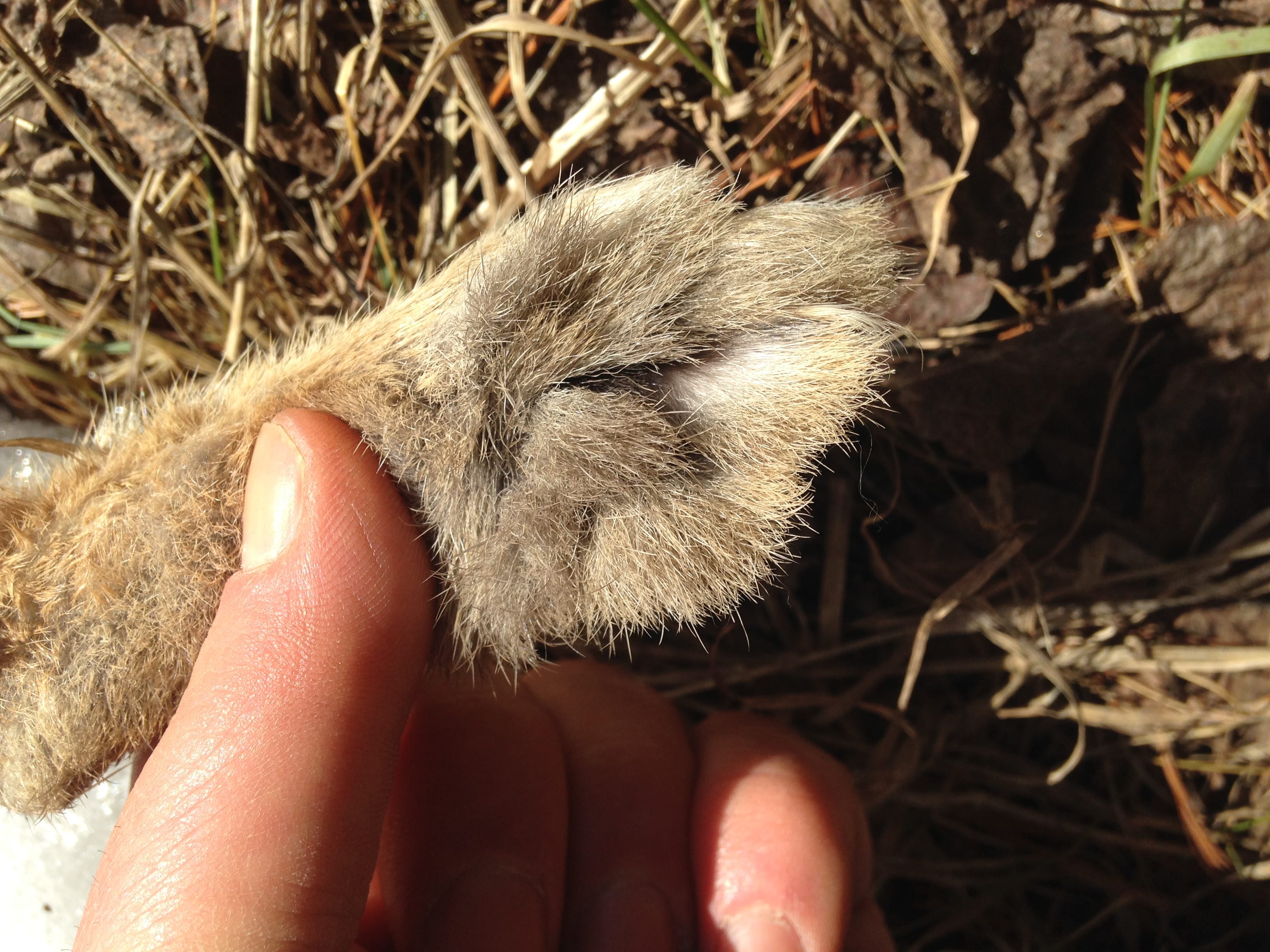|
EASTERN COTTONTAILSBy Byron Murray, Lead Instructor, The Outdoor School “All the world will be your enemy, Prince of a Thousand Enemies and whenever they catch you, they will kill you. But first they must catch you, digger, listener, runner, Prince with the swift warning. Be cunning and full of tricks and your people will never be destroyed.” Richard Adams from Watership Down Left hind foot of an Eastern Cottontail Rabbit (Sylvilagus floridanus):
While our native Eastern Cottontails (Sylvilagus floridanus) do not dig as the European Rabbits (Oryctolagus cuniculus) do in Richard Adams amazing book Watership Down, their foot structure is similar in many ways and it still allows them to run quickly from all of their potential predators. Over the past year I have been trying to study Eastern Cottontail Rabbit tracks with more intention. I keep seeing the tracks in the sand and soil all along GHTC maintained trails and have been trying to tease out a little more detail from the impressions in the dirt. I have also wanted to write about some of the specific things I have been looking for when I come across Rabbit tracks. Lately for me, it has been about the individual toes of the Rabbit tracks and their positions on the feet. The toe positions can tell us a lot about which of the feet we may be looking at. Is it a left front or a right front? If we look close, and know what to look for, the toes will tell us. This isn’t always necessary if come across a group of Rabbit tracks or even a lengthy trail, with all four limbs clearly laid out bounding down the path. Instead, knowing the individual clues to a specific foot, say a left front, can reveal some more details which may otherwise be invisible. Read the full article here. |



